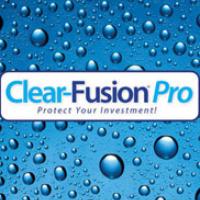Date: 2 May 2006
Bekaerts field tests have revealed that customers can reduce coating costs by more than 40% per square meter.
The major benefits of adopting rotatable technology are:
1. Maximized coater throughput: higher deposition rate reached due to higher possible power level
2. Reduced coater down-time due to improved material utilization efficiency and higher available material inventory
3. Long term stable sputter process and uniform coating deposition in both DC and AC mode
Bekaert has valuable experience working with large area glass coating customers to transition them from planar to rotating coating techniques. Bekaert was the first to bring rotatable targets to market and has successfully partnered with customers to develop the most advanced and complete sputter equipment to effectively use these targets for glass coating lines worldwide and to lower their total cost of ownership significantly. With this experience in mind, Bekaert is the preferred partner to generate this trend in the display market.
To maintain a competitive advantage, display manufacturers are looking to reduce component costs without sacrificing any quality in their end-products, said Yoshi Okamoto, Regional Manager, Asia, Bekaert. Our initial field test show that Bekaerts new rotatable sputtering system will provide a lower cost of ownership while maintaining the highest coating standards, helping display coaters meet these stringent demands.
Using Bekaert Rotatable ITO targets maximizes coater throughput by allowing higher possible power levels thanks to uniformed distribution of thermal load over the complete circumference of the target and because no low-melting point bonding material is being used. Bekaert Rotatable ITO targets reduce coater down-time because material utilization is 8 to 9 higher in comparison to planar targets. Long-term stable sputter processes in both DC and AC mode is ensured thanks to the single piece design and no nodule formation.
Bekaerts Compact End Block solution is the preferred solution for display coater upgrades and optical batch coaters. The minimal height of the end block allows maximum target length for maximum uniform coating width. The Compact End Block solution is completely dismountable for easy maintenance. The Compact End Block is based on concepts of the proven Bekaert End Block, thus maximizing your coater throughput. The flexible design of the Compact End Block allows for easy setting of the appropriate target-substrate distance. Compact End Block is mounted off-line on dedicated coater door, which allows fast integration of the Compact End Block solution in your coater.
For new display coaters, the Vertical Magnetron provides optimized coater efficiency through the use of a higher current (300A AC&DC). Its proven industrial features, such as improved labyrinth dust sealing and vacuum seals, guarantee overall robustness and ensure a long term stable sputter process in both DC and AC mode. Adaptation pieces allow easy integration of the magnetron in different coater configurations. The Vertical Magnetron has several design features, including atmospheric side access and the vertical bearing configuration which ensure simple maintenance.
Sputtering is a vacuum coating process and one of the core methods for depositing thin films on glass. Bekaert works closely with its customers to enable them to upgrade from planar to rotatable technology and offers lower cost of ownership through longer production runs, faster coating deposition and a more complete use of coating material. Bekaert has built its experience in the sputtering technology field through its own plastic foil coating for window film and industrial applications.
Industrial customers who execute a coating process for applications such as architectural and automotive glass (including Low-E and solar control films, and anti-reflective coatings), display glass and photovoltaic glass, can significantly benefit from adopting Bekaerts sputter solutions and technology. Customers can also rely on Bekaerts world-class customer support and leading research and development.
Photo: Bekaerts Compact End Block





















Add new comment